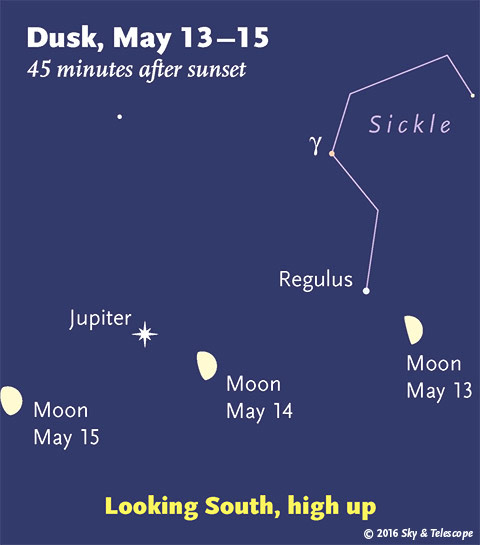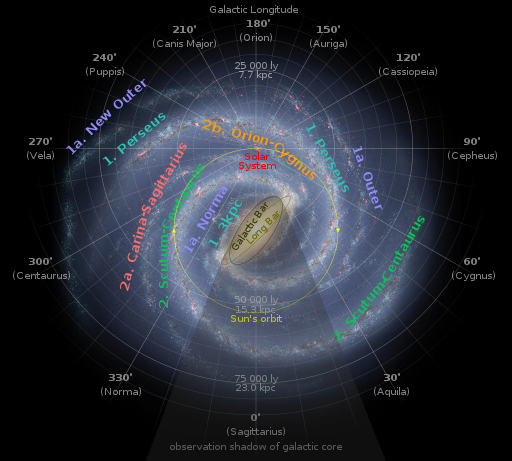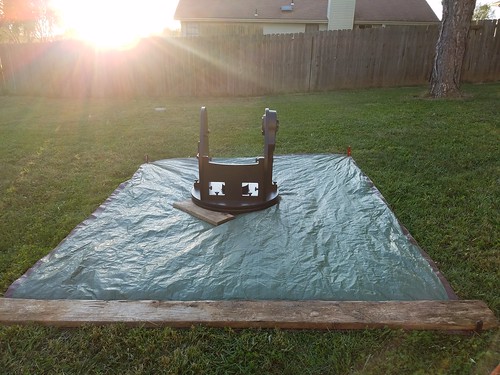Tonight is my first night this year as a volunteer of the Astronomical Society of Kansas City in our public outreach efforts to introduce astronomical observing to the public. Every Saturday night in May and through the end of October, we open up Powell Observatory to the public and provide education programs, solar observing, binocular observing and of course telescopic observing (weather and cloud cover permitting). The weather forecast for this evening couldn’t be better. See for yourself as we have our own weather station and sky cam broadcasting 24-hours a day.
Astronomy’s Sky this Week reports for tonight:
Saturday, May 14
• The Moon moves approximately 13° eastward relative to the starry background every 24 hours, and its motion carries it near Jupiter this evening. From North America, the two appear within 5° of each other all night. They will be in conjunction at 6 a.m. EDT tomorrow morning, when our satellite passes 2° due south of the planet. Although the best views of the pair come with the naked eye or binoculars, don’t pass up the opportunity to observe Jupiter through a telescope. The giant planet’s disk currently spans 39″ and displays a wealth of atmospheric detail. All this week, Jupiter appears high in the south as darkness falls and doesn’t set until nearly 3 a.m. local daylight time. It shines at magnitude –2.2 — brighter than any other point of light in the night sky — against the backdrop of southern Leo.
While Sky and Telescope Sky at a Glance expands on: The two brightest things in the evening sky, the Moon and Jupiter, shine high just a few degrees apart this evening, as shown here. Third brightest is Mars, low in the southeast after dark.

So for a great time this evening, head south of Kansas City down US-69 to Louisburg and join me and several hundred other people as we take in the wonders of the night sky.
Keep Looking Up!






 A quick shout-out to everyone in the Kansas City metro area to come on down to the
A quick shout-out to everyone in the Kansas City metro area to come on down to the